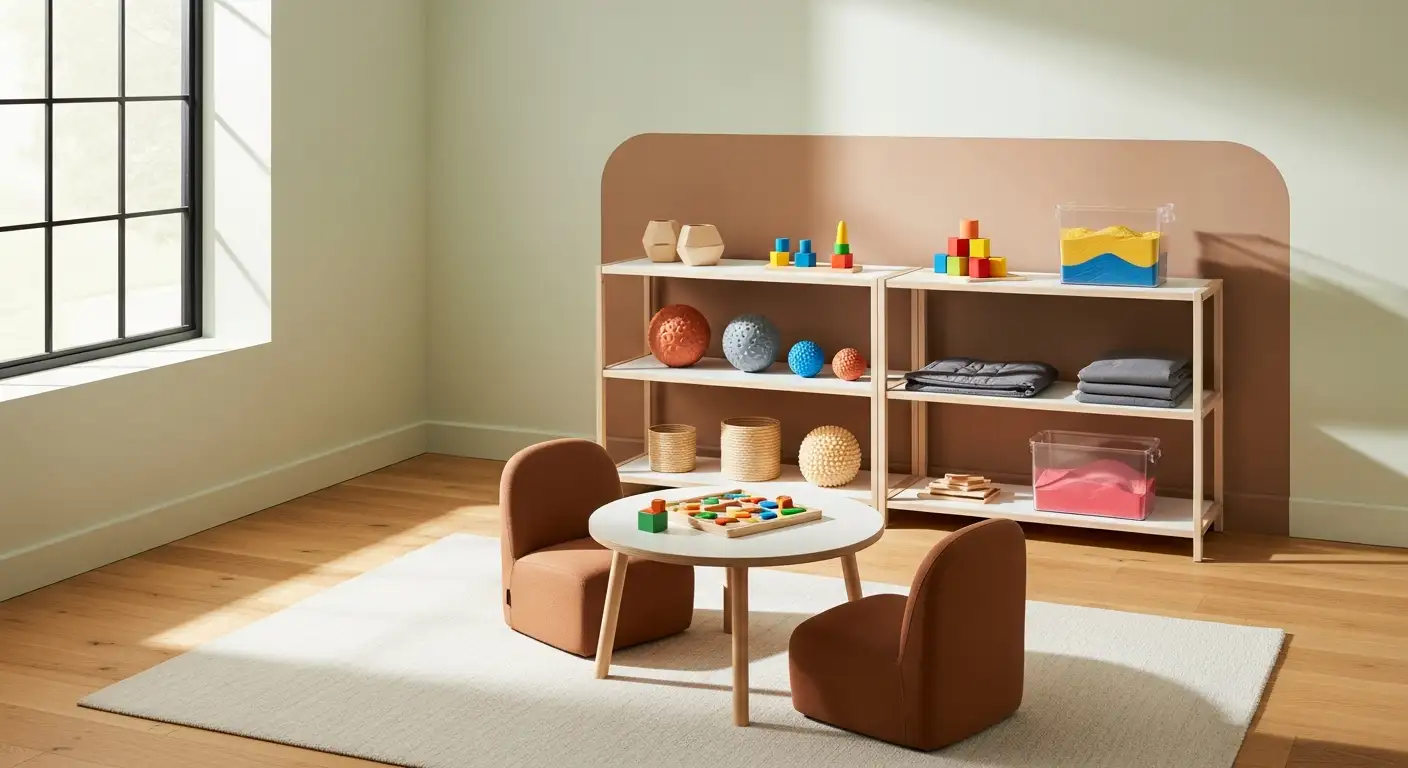How Physical Therapy Supports Balance and Stability


Understanding the Foundation of Balance and Its Significance
Balance and stability are fundamental components of functional movement, essential for daily activities and overall quality of life. As individuals age or experience health conditions, maintaining these abilities becomes increasingly challenging. Physical therapy offers targeted interventions designed to assess, restore, and enhance balance, thereby reducing fall risks, improving mobility, and promoting independence. This article explores how physical therapy supports balance and stability through comprehensive assessments, personalized exercises, and innovative techniques.
The Systems Behind Balance and Stability
 Balance is a complex process that involves multiple body systems working together seamlessly. These systems include vision, the inner ear (vestibular system), muscles, proprioception, and circulation.
Balance is a complex process that involves multiple body systems working together seamlessly. These systems include vision, the inner ear (vestibular system), muscles, proprioception, and circulation.
The visual system provides essential information about the environment and spatial orientation. Good eyesight helps guide movements and maintain alignment during daily activities.
The vestibular system, located in the inner ear, detects head movements and changes in position. It helps the brain interpret spatial information to keep balance, especially during movement or when visual cues are limited.
Muscles and joints support posture and movement. Strength and flexibility in the lower limbs, hips, and core are vital for stability. Musculoskeletal health ensures that the body can respond effectively to balance challenges.
Proprioception is the body's ability to sense where its parts are in space without visual cues. It involves sensors in muscles, tendons, and joints that send signals to the brain, enabling quick adjustments to maintain balance.
Circulation plays a role by delivering oxygen and nutrients to muscles and the nervous system, which are essential for proper functioning of balance-related processes.
Physical therapists evaluate these systems through comprehensive testing to determine the causes of balance problems. They examine muscle strength, joint flexibility, inner ear function, visual acuity, and proprioceptive responses.
Assessment results guide the development of personalized treatment plans, including exercises to strengthen weak muscles, retrain the vestibular system, improve vision, and enhance body awareness. Combining these targeted approaches helps restore stability and improves overall quality of life.
Targeted Exercises and Techniques for Balance Enhancement
 Physical therapy for balance incorporates various exercises and interventions tailored to address individual needs. Effective exercises often include weight shifts, single-leg stands, and gait training on different surfaces, which help improve stability.
Physical therapy for balance incorporates various exercises and interventions tailored to address individual needs. Effective exercises often include weight shifts, single-leg stands, and gait training on different surfaces, which help improve stability.
Therapists prescribe specific activities such as side-stepping, knee curls, tandem stance (standing heel-to-toe), and exercises on unstable surfaces like balance boards. These exercises challenge proprioception—the body's awareness of its position—and strengthen critical muscle groups supporting balance.
To further improve balance and coordination, tools like stability balls and balance boards are employed, along with movements derived from practices like tai chi. Resistance exercises using light weights can also boost muscle strength, enhancing postural control.
Vestibular rehabilitation therapy (VRT) plays a vital role in restoring inner ear function. This includes exercises that retrain the brain to interpret signals from the vestibular system correctly, reducing dizziness, vertigo, and improving overall stability.
Gait training is another essential component, where patients practice walking on varied surfaces, using assistive devices if necessary. These sessions analyze and correct walking mechanics, stride length, and foot placement to foster safer, more confident movement.
Functional activities are integrated into therapy to mimic daily life motions, such as turning the head while standing, reaching, or carrying objects, which help translate exercises into real-world stability.
Below is a table summarizing the exercises and interventions used in physical therapy to enhance balance:
| Exercise/Technique | Purpose | Tools/Methods |
|---|---|---|
| Weight shifts | Improve proprioception | Body weight |
| Single-leg stands | Increase stability | No equipment or balance aids |
| Tandem stance | Challenge postural control | Supportive surfaces |
| Gait training | Enhance walking stability | Unsecured surfaces, assistive devices |
| Vestibular exercises | Reduce dizziness, vertigo | Head movement, eye tracking |
| Balance boards/Stability balls | Strengthen coordination | Balance tools |
| Functional activities | Promote real-life balance | Daily motion simulations |
| Proprioceptive training | Improve body awareness | Unstable surfaces, eyes closed |
Staying active and practicing these targeted exercises regularly can significantly reduce fall risks, restore confidence, and improve overall mobility and quality of life. Physical therapists often educate patients on home-based programs and safety measures, such as proper footwear and hazard removal, to sustain progress and prevent future balance issues.
The Role of Personalized Assessments and Interventions

How does physical therapy help improve balance and stability?
Physical therapy promotes stability and reduces fall risk through carefully tailored treatment plans. These plans are based on detailed assessments that identify specific weaknesses or limitations. By incorporating exercises that strengthen muscles, improve flexibility, enhance posture, and retrain coordination and vestibular functions, therapists help patients regain confidence in their movements.
What assessments are used to determine the cause of balance problems?
To formulate effective interventions, therapists conduct comprehensive evaluations. These include testing muscle strength and joint flexibility to detect musculoskeletal issues. They also assess inner ear function, coordination, and walking patterns to uncover neurological or vestibular causes. Using these evaluations, therapists pinpoint precise factors contributing to balance difficulties.
In what ways does physical therapy address fall prevention beyond exercises?
Beyond targeted exercises, physical therapists conduct environmental assessments to identify hazards like poor lighting, loose rugs, or clutter. They recommend and assist in implementing modifications such as installing grab bars or improving lighting at home. Additionally, therapists advise on the use of assistive devices like canes or walkers and educate patients on safe mobility techniques. This holistic approach ensures a safer environment, minimizes fall risks, and supports independence.
| Aspect | Approach | Details |
|---|---|---|
| Personal Evaluation | Full clinical assessment | Analyzes muscle strength, flexibility, inner ear, gait |
| Muscle Focus | Strengthening and stretching exercises | Targets legs, hips, core, improves overall stability |
| Posture Correction | Exercises and awareness techniques | Promotes proper alignment, reduces imbalance |
| Assistive Devices | Recommendations and training | Canes, walkers, and proper usage guidance |
| Home Safety | Environment modifications | Better lighting, grab bars, removing obstacles |
Physical therapists strive to enhance balance and safety through proactive, personalized strategies, helping patients maintain mobility and independence.
The Benefits and Practical Applications of Balance-Focused Therapy
Why are balance and stability important for physical activity performance?
Maintaining good balance and stability is essential for performing daily movements safely and effectively. They allow the body to control movements precisely, which reduces the risk of falls and injuries.
Good balance also supports proper posture and muscle function, making physical activities more efficient and reducing strain on joints and muscles. This foundation helps individuals participate confidently in both routine tasks and recreational activities.
What are the benefits of physical therapy in relation to balance?
Physical therapy plays a vital role in improving balance, especially for those recovering from injuries, aging, or living with chronic conditions. Therapeutic exercises focus on strengthening leg and core muscles, which are crucial for stability.
Through targeted interventions such as gait training, vestibular rehabilitation, and proprioceptive exercises, patients see a reduction in fall risk and an increase in confidence. These improvements help individuals regain independence and enjoy a better quality of life.
How does physical therapy contribute to recovery and ongoing stability?
Physical therapy not only aids in recovering from injuries like strokes or joint issues but also helps manage ongoing conditions such as Parkinson's disease or vestibular disorders.
Therapists develop personalized plans that include balance exercises, strength training, and education on hazard prevention. This approach ensures patients maintain their stability over time, reducing the chance of future falls and promoting long-term safety.
Practical applications for fall prevention, mobility, confidence, and independence
Therapeutic programs incorporate exercises such as side-stepping, one-legged stands, and walking heel-to-toe to challenge and improve balance.
Gait and movement training refine walking mechanics, helping to prevent stumbling on uneven surfaces. Vestibular rehab retrains inner ear function, lessening dizziness that can cause falls.
Home safety assessments and advice on using assistive devices like canes or walkers are vital in creating safer environments. Education about proper footwear, lighting, and environmental modifications helps individuals stay safe at home and outdoors.
Regular participation in physical therapy encourages ongoing active lifestyles. Furthermore, specific drills and exercises build confidence, allowing individuals to engage in daily activities independently.
| Action Area | Examples of Exercises or Strategies | Benefits |
|---|---|---|
| Balance Exercises | Single-leg stands, balance boards | Improve proprioception and reaction time |
| Gait and Stability Training | Walking on varied surfaces, gait analysis | Enhance walking safety and coordination |
| Vestibular Rehabilitation | Head movements, eye exercises, balance drills | Reduce dizziness, restore spatial awareness |
| Home Safety & Education | Remove hazards, proper footwear, assistive devices | Minimize fall risks, promote independence |
Physical therapy's holistic approach strengthens the body's systems involved in balance, ensuring safer movement, greater mobility, and renewed confidence for a healthier, more independent life.
Education, Safety, and Lifestyle Modifications for Long-Term Balance
Maintaining good balance over time requires a combination of proper lifestyle choices, home safety measures, and ongoing education. Physical therapists often emphasize these elements to help individuals sustain their balance, reduce the risk of falls, and promote independence.
One of the most effective strategies is making modifications to the home environment. Installing grab bars in bathrooms, ensuring adequate lighting throughout living spaces, and removing tripping hazards like loose rugs or clutter can prevent many falls. Additionally, using assistive devices such as canes or walkers appropriately provides extra support when needed.
Choosing the right footwear is equally important. Supportive, well-fitted shoes with non-slip soles help improve stability during daily activities. Avoiding high heels or shoes with uneven soles can lower the risk of slips or trips.
Lifestyle changes also play a critical role. Staying physically active through exercises like walking, yoga, or strength training maintains muscle strength and flexibility. Proper nutrition and hydration support overall health and muscle function, contributing to better balance.
Fall recovery techniques are another key aspect taught by physical therapists. Learning how to safely fall or recover after losing balance reduces injury risk. Techniques such as controlled descent and proper landing can ensure safety if a fall occurs.
In addition to physical modifications, education about safe movement strategies and environmental awareness helps individuals remain confident and independent. Pedestrians are encouraged to pay attention to walkways, use handrails, and avoid rushing.
Overall, a comprehensive approach combining environmental modifications, supportive footwear, healthy lifestyle choices, and learned safety techniques can significantly enhance long-term balance. Physical therapists tailor these strategies to each individual’s needs, empowering them to live safely and confidently.
| Strategy | Description | Additional Notes |
|---|---|---|
| Home safety modifications | Installing grab bars, removing hazards, improving lighting | Critical for reducing fall risks at home |
| Proper footwear | Supportive shoes with good grip | Prevent slips and improve stability |
| Lifestyle changes | Regular activity, nutrition, hydration | Maintains muscle strength and overall health |
| Fall recovery techniques | Learning how to fall safely and recover | Minimizes injury risk during falls |
| Education | Safe movement, environment safety, fall prevention | Empowers independence and confidence |
By integrating these practices into daily life, individuals can better manage long-term balance challenges and enjoy a higher quality of life.
Empowering Movement Through Knowledge and Support
Physical therapy plays a vital role in supporting balance and stability, addressing the physical and environmental factors that influence safety and mobility. Through tailored exercises, comprehensive assessments, and educational strategies, individuals can achieve greater stability, reduce fall risks, and enhance their overall quality of life. Staying active and informed empowers individuals to maintain independence and confidence in everyday activities, making physical therapy an essential component of health and well-being.
References
- Physical Therapy for Balance: Benefits and Exercises
- How Physical Therapy Can Help You Find Better Balance and Stability
- Physical Therapy Guide to Balance Problems | Choose PT
- Boost Balance with Physical Therapy: Stability & Confidence
- Enhancing Balance Through Physical Therapy: A Comprehensive ...
- Physical Therapy for Balance and Coordination - La Clinica SC
- Regain Stability – How Physical Therapy Can Help with Balance ...
- How Physical Therapy Can Help with Balance and Fall Prevention
- Physical Therapy for Improving Balance and Coordination
Recent articles

What Is Supportive Care ABA?
Understanding Supportive Care ABA: A Cornerstone of Multidisciplinary Therapy for Autism

What Are the Behavioral Characteristics of a Child with Autism
Understanding Behavioral Traits and Interventions for Children with Autism Spectrum Disorder

How to Become a Speech Therapist
Charting Your Path to a Rewarding Career in Speech Therapy

Teaching Safety Skills to Children with Autism
Empowering Autistic Children Through Targeted Safety Skills Development

How Do You Help a 2 Year Old with Autism
Early Steps: Supporting Toddlers with Autism for Lifelong Growth

The Benefits of ABA Therapy for Children with Autism
Unlocking Potential: How ABA Therapy Transforms Lives of Children with Autism

